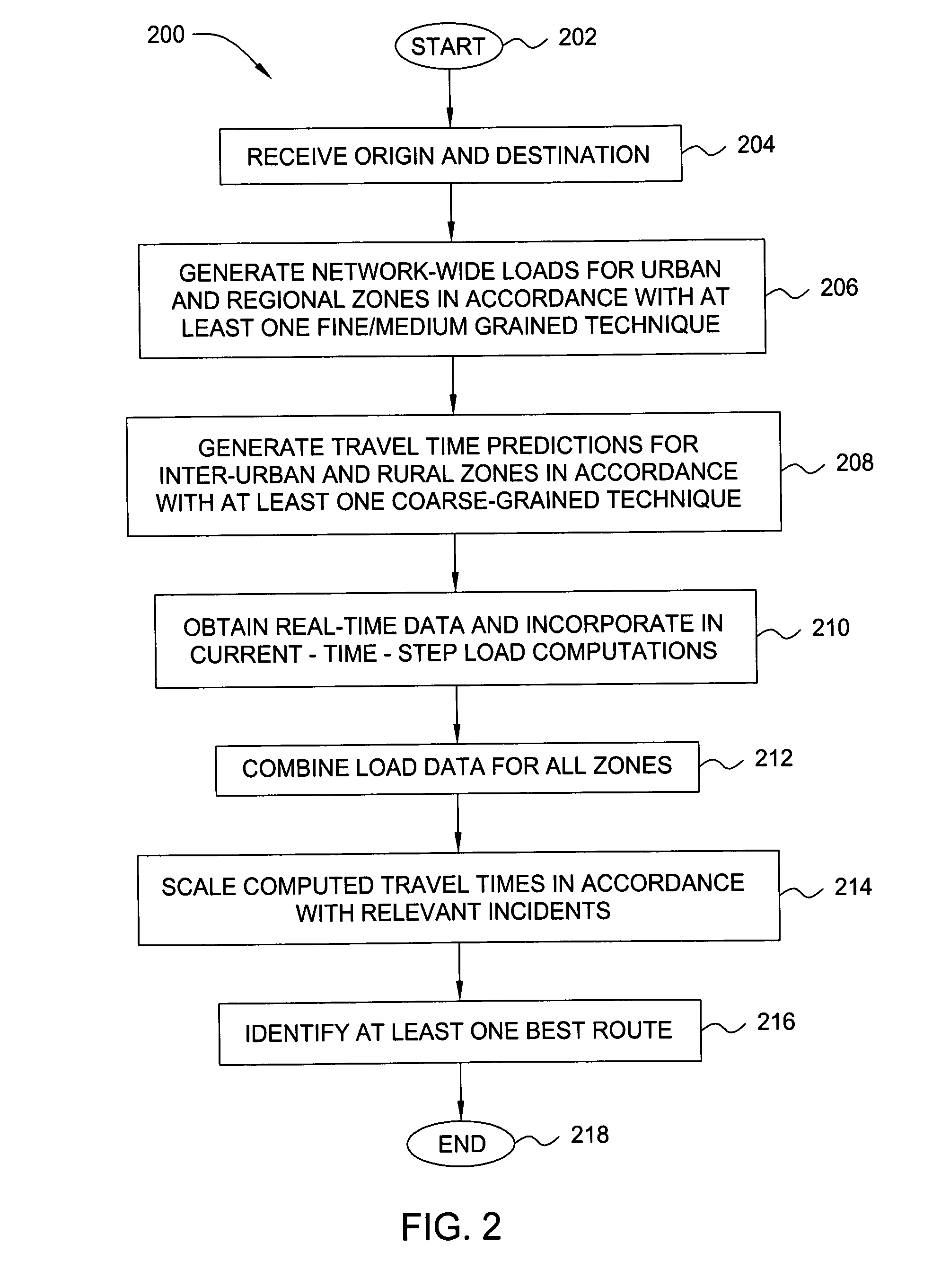Method and apparatus for end-to-end travel time estimation using dynamic traffic data
a traffic data and end-to-end technology, applied in the field of transportation networks, can solve the problems of dynamic, state-dependent data that may influence the travel time (e, ) is not accounted, and the computed route may not, in fact, be the best route, etc., to facilitate the identification of the best or fastest rou
- Summary
- Abstract
- Description
- Claims
- Application Information
AI Technical Summary
Benefits of technology
Problems solved by technology
Method used
Image
Examples
Embodiment Construction
[0017]In one embodiment, the present invention is a method and apparatus for end-to-end travel time estimation using dynamic traffic data. Embodiments of the present invention account for real-time, state-dependent data in order to provide more accurate end-to-end estimates and predictions (e.g., shortest paths or best routes) for transportation networks, including wide-area, spatially heterogeneous transportation networks. Thus, embodiments of the present invention may be implemented to advantage in applications such as internet mapping, route guidance, in-vehicle or on-board navigation, fleet routing (e.g., for major carriers or the military) and the like.
[0018]As used herein, the terms “shortest path” or “best route” refer to one or more individual links (e.g., road segments) in a transportation network that connect a designated point of origin to a designated destination. Specifically, a shortest path or best route represents the series of links that, if traveled, are expected t...
PUM
 Login to View More
Login to View More Abstract
Description
Claims
Application Information
 Login to View More
Login to View More - R&D
- Intellectual Property
- Life Sciences
- Materials
- Tech Scout
- Unparalleled Data Quality
- Higher Quality Content
- 60% Fewer Hallucinations
Browse by: Latest US Patents, China's latest patents, Technical Efficacy Thesaurus, Application Domain, Technology Topic, Popular Technical Reports.
© 2025 PatSnap. All rights reserved.Legal|Privacy policy|Modern Slavery Act Transparency Statement|Sitemap|About US| Contact US: help@patsnap.com



